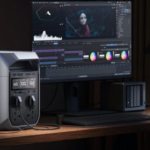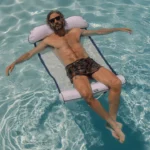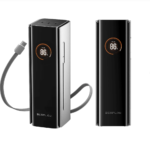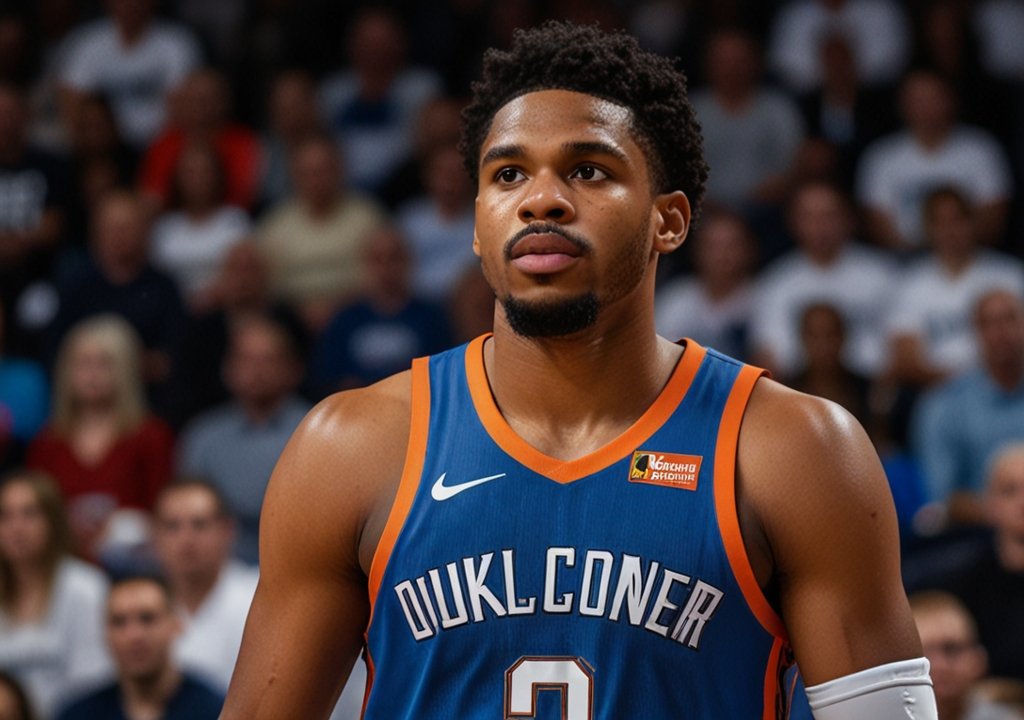Picture this: the gilded halls and manicured gardens of the Château de Versailles. Sunlight glinting off ancient stone. The air, thick with history, now vibrates with a different kind of electricity – the focused energy of horse and rider moving as one. This September, amidst this breathtaking backdrop, something truly extraordinary unfolds: the Equestrian Paralympics 2024 2024 . Forget everything you think you know about athletic competition. This isn’t just sport; it’s a breathtaking display of trust, communication, and artistry forged between human and horse, pushing the boundaries of what’s possible. Honestly? It’s the Paralympic event that often leaves spectators utterly speechless, tears welling up for all the right reasons.
Table of Contents
- Beyond Sport: Where Art Meets Partnership at Versailles
- Decoding Para Dressage: More Than Just Horseback Riding
- The Heart of the Competition: Grades, Tests, and Triumphs
- Understanding the Five Grades (Table)
- The Precision of the Championship Tests
- The Freestyle: Music, Movement, and Magic
- Versailles: A Stage Fit for Equestrian Royalty
- Team Glory & Individual Brilliance: What to Watch For
- The Silent Dialogue: How Rider and Horse Truly Connect
- Paris 2024: A Watershed Moment for Para Equestrian?
- Your Guide to Experiencing the 2024 Equestrian Paralympics
- Frequently Asked Questions (FAQs)
- The Lasting Canter: Why This Event Resonates
1. Beyond Sport: Where Art Meets Partnership at Versailles
The 2024 Paris Paralympic Games promise spectacle, but the equestrian events (running September 3rd to 7th) offer something uniquely profound. Held at the iconic Château de Versailles, para dressage – the only equestrian discipline in the Paralympics and often called its only artistic sport – elevates competition to pure poetry. Forget brute force; here, victory is carved from subtle shifts in weight, imperceptible rein cues, and an almost telepathic understanding. It’s a sport where men and women compete directly against each other, not separated by gender, but grouped solely by the functional impact of their impairment. The playing field? Leveled by the profound connection between athlete and equine partner. Having covered equestrian sports for years, I can tell you: the raw emotion in that arena hits differently. It redefines resilience.
2. Decoding Para Dressage: More Than Just Horseback Riding
So, what exactly is para dressage? At its core, it’s the Paralympic discipline of dressage. Riders perform a series of prescribed movements – circles, transitions, halts – within a rectangular arena, judged on accuracy, harmony, impulsion (the horse’s energy and forward desire), and the rider’s position and influence. But here’s the kicker: riders have varying physical impairments affecting their balance, muscle control, or limb function. This is where the magic of adaptation comes in.
Think about it. How do you guide a 1,200-pound athlete with precision when your own body communicates differently? Riders become masters of nuance. A deeper breath, a minute tensing of a core muscle, the gentlest nudge with a calf – these become the vocabulary. Adaptive equipment plays a crucial role:
- Special Reins: Loop reins, connecting reins, or even rein bars give riders with limited hand or arm function greater leverage and control.
- Voice Commands: Permitted in some grades, a softly spoken word can reinforce an aid. (Though over-reliance is penalized – the physical dialogue remains paramount).
- Custom Saddles & Supports: Saddles might feature higher pommels or cantles, extra padding, or specialized stirrups. Some riders use supportive straps.
- Whips & Spurs: Used strategically as permitted extensions of the rider’s aids, never for punishment.
The judges? They’re looking for the same qualities as in Olympic dressage: correctness of movement, obedience, suppleness, and the seamless flow between exercises. The difference lies in assessing how effectively the rider, given their specific functional abilities, communicates and achieves that harmony. It’s about the quality of the partnership, pure and simple.
3. The Heart of the Competition: Grades, Tests, and Triumphs
The equestrian paralympics 2024 features both individual and team competitions, meticulously structured across five grades (I-V). This classification system is vital – it ensures fair competition by grouping riders based on the impact their impairment has on their riding ability, not just the impairment itself. A rider with a significant impairment affecting all limbs might be in Grade I, while a rider with a less impactful impairment, perhaps affecting one limb, might compete in Grade V. The movements required in the tests reflect these differences in functional ability.
Understanding the Five Grades: A Quick Reference
| Grade | Functional Profile | Typical Test Movements | Focus of Aids |
|---|---|---|---|
| I | Severely impaired riders, often affecting all limbs & trunk. Limited trunk control & balance. Walk only. | Simple sequences, large figures, emphasis on basic transitions & halt. | Primarily voice, seat, weight aids; adaptive tack essential. |
| II | Riders with severe impairments or combinations affecting trunk & limbs. Some walk, limited trot. | Introduction of trot work (may be limited), more complex figures than Grade I. | Combination of voice, seat, weight, rein aids; adaptive tack common. |
| III | Riders with moderate impairments (e.g., good trunk control but limb limitations, or moderate impairment in all limbs). Walk & trot. | Trot sequences, simple changes of direction, increased collection demands. | Standard seat, leg, hand aids; may use adaptive tack. |
| IV | Riders with mild impairments (e.g., impairment in one or two limbs, mild visual impairment). Walk, trot, canter. | Canter work introduced, more complex figures, shoulder-in, travers. | Standard aids; minimal adaptive tack might be used (e.g., whip length). |
| V | Riders with minimal impairments (e.g., mild limb deficiency, reduced range of motion). Walk, trot, canter. | Most complex movements, similar to Olympic FEI Para tests: pirouettes, half-passes, flying changes. | Standard dressage aids; tack usually standard. |
The Championship Tests (Individual & Team): These are the core events. Riders perform a set pattern of movements (the “test”), memorized and executed precisely, specific to their Grade. Judges score each movement out of 10, plus collective marks for the horse’s gaits, the rider’s performance, and the overall harmony. Accuracy is key, but so is the quality of execution – the fluidity, the expression, the feeling that horse and rider are moving with a single mind. The pressure? Immense. One missed marker, one hesitant transition, can cost dearly.
The Freestyle: Where Personality Shines: This is the crowd-pleaser. The individual freestyle event allows riders to choreograph their own routines set to music. Here, artistic interpretation explodes onto the scene. Riders choose movements that highlight their horse’s strengths and their own partnership, weaving them into a flowing, musical tapestry. The music isn’t just background; it’s an integral part of the performance, rhythmically matching the horse’s footfalls and enhancing the emotional impact. Judging still prioritizes technical execution, but the artistic merit, originality, and musical interpretation become major factors. It’s here that the soul of para dressation truly sings. Seeing a rider perfectly sync an extended trot to a crescendo? Chills. Absolute chills.
4. Versailles: A Stage Fit for Equestrian Royalty
Let’s talk about the venue. The Château de Versailles isn’t just a location; it’s a statement. Hosting the Paralympic equestrian events here is symbolic genius. This palace, a monument to absolute power and human artistry, now becomes the stage for a discipline showcasing a different kind of power: the power of partnership, perseverance, and grace overcoming physical challenge. The temporary arena constructed within the historic grounds promises a visually stunning backdrop, adding an almost surreal layer of grandeur to the competition. Can you imagine the photographs? Horse and rider framed by the majesty of Versailles – it’s going to be iconic. Some purists grumble about logistics, but the sheer impact of this location elevates the entire event globally.
5. Team Glory & Individual Brilliance: What to Watch For
The 2024 Paris Paralympics team competition is already buzzing after the US squad’s thrilling victory at the FEI World Championships, proving they are serious contenders for that coveted Team Gold. But let’s be real, the Europeans are historically dominant. Nations like Great Britain, The Netherlands, and Denmark boast incredibly deep talent pools. The team event (typically three riders per nation, from different grades) demands consistency and nerves of steel. Every score counts.
Individually, watch for stars like:
- Michele George (BEL, Grade IV): A multiple Paralympic and World champion, known for her exceptional harmony and technical brilliance.
- Sanne Voets (NED, Grade IV): Another dominant force, Olympic and World champion, renowned for her expressive freestyles.
- Roxanne Trunnell (USA, Grade I): A trailblazer for the US, individual gold medalist in Tokyo, famed for her incredibly subtle aids and partnership with her horse.
- Lee Pearson (GBR, Grade II): A Paralympic legend with a staggering 14 gold medals. His experience and competitive fire are unmatched.
- Sara Morganti (ITA, Grade I): A consistent medalist with beautiful, flowing tests.
New talents are always emerging, ready to challenge the established order. Paris could be their breakout moment.
6. The Silent Dialogue: How Rider and Horse Truly Connect
This is the bit that gets me every time. The equestrian paralympics 2024 isn’t just about the rider overcoming their challenges; it’s about the horse understanding and responding to a unique language. Trainers spend years finding the perfect equine partner – a horse with the temperament, sensitivity, and trainability to tune into these subtle cues. It’s a relationship built on immense trust and patience.
Consider a rider with limited leg function. They might rely heavily on precise weight shifts deep within the saddle – a fraction of an ounce more pressure on one seat bone signaling a turn. A rider without use of their arms develops an incredibly refined seat and core connection. The horse learns to feel the intention behind the slightest change. It’s a dialogue conducted almost entirely through feel, a testament to the horse’s intelligence and willingness. This profound relationship between horse and rider is the beating heart of the sport. You don’t just watch it; you feel it.
7. Paris 2024: A Watershed Moment for Para Equestrian?
Could Paris 2024 be the moment para dressage truly captures the wider public imagination? The combination is potent: the unparalleled prestige of Versailles, the growing global profile of the Paralympics, and the inherent drama and beauty of the sport itself. Broadcasters are (finally) getting better at capturing the nuance – the close-ups on a rider’s focused gaze, the subtle twitch of a rein, the horse’s flickering ear responding to a nearly invisible aid. Social media snippets showcasing freestyles go viral for a reason – they resonate.
There’s also a growing recognition of the sport’s technical depth. This isn’t “inspiration porn”; it’s elite athletic performance demanding years of grueling training, exceptional horsemanship, and strategic brilliance. The 2024 Paralympic Games at Versailles has the potential to shatter lingering misconceptions and cement para dressage’s status as a major, must-watch event. Fingers crossed the coverage does it justice.
8. Your Guide to Experiencing the 2024 Equestrian Paralympics
Dates: Mark your calendars: September 3rd to 7th, 2024. Competition days are packed.
Venue: Château de Versailles, France. Expect spectacular settings (and plan transport well in advance!).
Tickets: Check the official Paris 2024 Paralympic Games ticketing website. Equestrian events, especially in this venue, are likely to be popular. Snag them early if you can.
Watching Remotely: Major broadcasters holding Paralympic rights (like NBC in the USA, Channel 4 in the UK, CBC in Canada, etc.) will cover the events. Check their schedules. Streaming will also be available via the Paralympics website and official apps. Set reminders for the Freestyle days – trust me.
Following Online: Use the hashtags #ParaDressage, #EquestrianParalympics, #Paris2024, #Versailles2024. Follow FEI Para Equestrian, Paralympic Games, and national federation accounts for updates, behind-the-scenes content, and results.
9. Frequently Asked Questions
- Q: What’s the difference between Olympic Dressage and Paralympic Dressage (Para Dressage)?
A: The core principles of harmony, obedience, and correct movement are identical. The key difference is the classification system in para dressage (Grades I-V) that groups riders by functional ability. Tests are designed specifically for each grade, and riders may use permitted adaptive equipment. Both are highly technical and demanding. - Q: How are riders classified into the five grades?
A: Classification is done by certified physiotherapists and doctors who assess the rider’s functional ability on horseback – looking at muscle strength, range of motion, coordination, and balance. The grade reflects how the impairment impacts their ability to perform dressage movements and use standard aids (legs, seat, hands). It’s about riding function, not just the impairment diagnosis. - Q: Can any horse compete in para dressage?
A: No. Horses must meet specific veterinary requirements and be registered with the FEI (international governing body). Crucially, they need an exceptional temperament – calm, sensitive, responsive, and adaptable to potentially different aids and equipment. They undergo rigorous training, just like Olympic dressage horses. - Q: What kind of adaptive equipment is allowed?
A: Permitted equipment includes various rein designs (loop, connecting, bar), specialized saddles and pads, supportive straps, adapted stirrups, and voice commands (in lower grades). The equipment must be approved and is intended to compensate for the rider’s impairment, not enhance performance beyond their natural ability. Whips and spurs have specific length/type regulations. - Q: How can I get involved in para equestrian, either as a rider or supporter?
A: Contact your national equestrian federation – they often have para-equestrian programs or can connect you with local centers. Organizations like The Riding for the Disabled Association (RDA) in the UK or PATH International in the USA offer therapeutic and competitive riding opportunities. Volunteering at events or supporting charities are great ways to help.
10. The Lasting Canter: Why This Event Resonates
As the final halt is saluted at Versailles on September 7th, the medals will glitter, anthems will play, and champions will celebrate. But the true legacy of the equestrian paralympics 2024 will linger long after. It’s found in the quiet moments: the deep breath of a rider before entering the arena, the soft nicker of a horse recognizing its partner, the intricate dance performed through a language of weight and whisper.
This sport showcases not limitation, but extraordinary possibility. It redefines partnership. It proves that communication transcends the physical, that artistry blooms in the most unexpected places, and that the bond between human and animal can overcome immense obstacles. It’s a powerful reminder of the strength found in grace, the focus found in stillness, and the sheer, unadulterated beauty of movement achieved in perfect harmony.
So, will you be watching when history is made amidst the grandeur of Versailles? Trust me, it’s an experience that changes how you see sport, partnership, and the incredible potential within us all. What moment do you think will define these Games?
YOU MAY ALSO LIKE: Wheelchair Basketball Paralympics 2024: A Complete Guide











